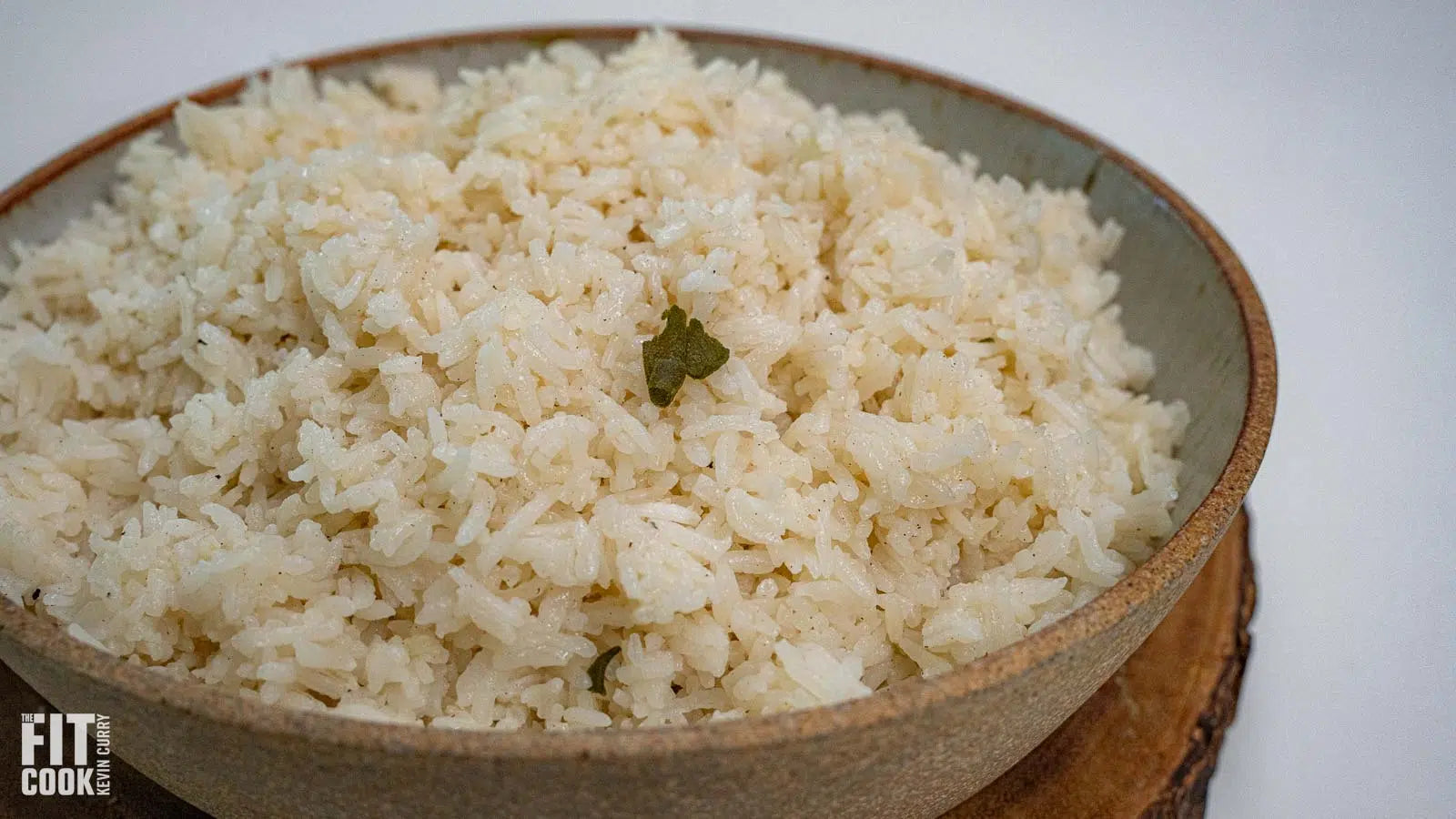
How to Make the Brown Butter Sage Rice Recipe
Author:
Kevin Curry

I’ll say it for you – brown butter infused with sage is a match made in culinary Heaven!
Like many of you reading this, I’m no stranger to brown butter with the sweet tooth I have! Brownies and cookies and cakes are even more decadent in my opinion! But in savory recipes, brown butter does the same – elevates the flavor of a dish.
Let’s break down this flavor combination to better understand why it’s perfect for pairing with a variety of grains and other savory recipes.
Why Sage and Brown Butter Pair Well Together With Rice
Sage has a piney, slightly peppery taste and fragrant aroma. Its flavor profile is BOLD, and distinctive. Brown butter, on the other hand, is the remains of slowly toasting the milk solids that are in butter, which produces a nutty, almost caramelized aroma and taste.
Together, the earthy notes of sage beautifully complement the rich, nutty profile of brown butter. It’s harmonious. So yeah, it makes sense that the combination would enhance savory recipes such as “Brown Butter Sage Jasmine Rice,” a dish that’s a testament to this pairing.
How to Make Brown Butter
I had no idea how easy it to make brown butter. I was definitely overthinking it! Here’s a quick guide on “how to make brown butter”:
-
What Pan Should You Use?
I prefer a lighter-colored enameled cast iron or a stainless-steel pan. Black-coated pans are fine but you won’t be able to easily monitor when the butter changes color so not to burn it. Set the pan on medium heat. -
Use Unsalted Butter
I almost always use unsalted butter so that I can better control the amount of sodium in my diet. Place your butter in the pan and let it melt. -
Go Slow, Not Fast
Begin melting the butter over medium heat and lightly stir. As it melts, the water in butter will begin to evaporate so the butter start to foam. -
Watch the Color
Stir occasionally as the milk solids will separate and begin to brown at the bottom. You want a golden brown color. -
Let the Aroma Guide You
As the butter browns, it will give off a nutty aroma. This is a good sign – it means it’s almost done and you’ve done everything right up to this point! -
Remove to Prevent Burning and Let Cool
Once you achieve that golden brown color, remove from heat immediately to prevent burning. It’s best to just transfer the brown butter to a different container to stop the cooking process.
And boom – you just made brown butter!
The Benefit of Cooking Fresh Sage in Brown Butter
Adding fresh sage to brown butter isn’t just for the enhanced flavor profile! When sage leaves are added to hot brown butter, they sizzle, crispen, and intensify in flavor.
The heat releases the herb’s oils which makes the aroma more pronounced and thus the taste more robust, complex.
Kinda like the seasoning leftover in pans after cooking something up, the crispy sage leaves are DELICIOUS if you want to remove them and crush them over a meal you want to enjoy.
